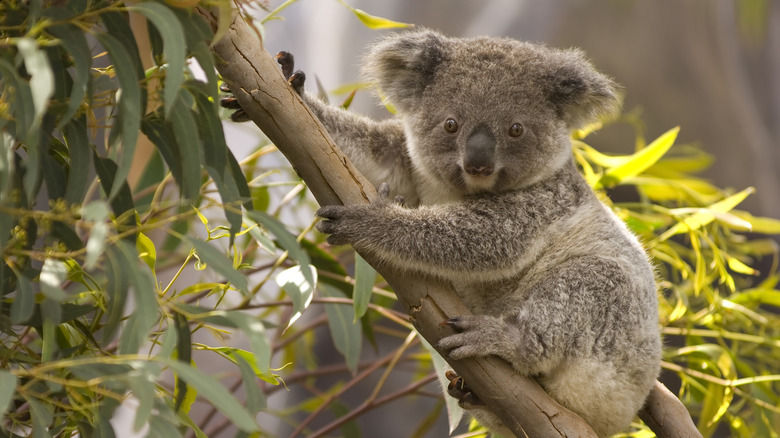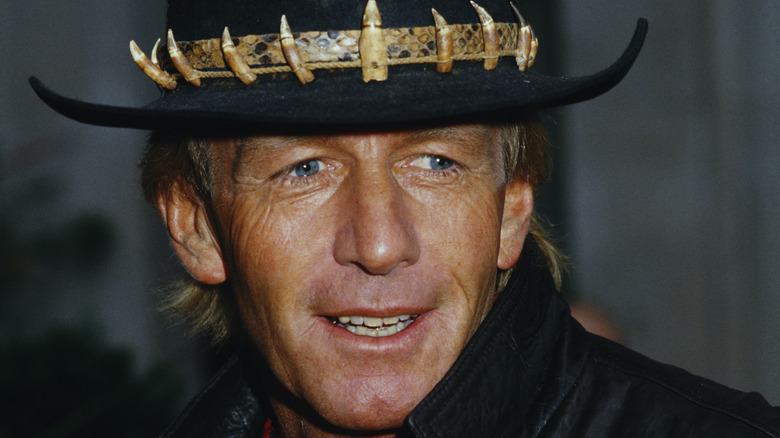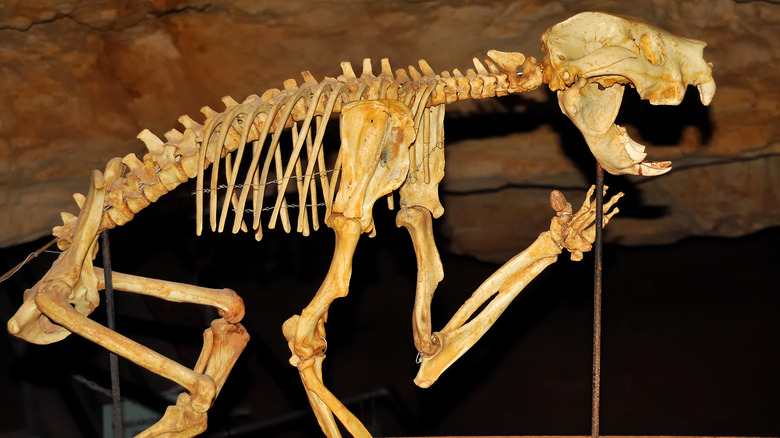The Legend Of Drop Bears Explained
If you're visiting Australia, beware the bloodthirsty drop bear. If you must pass through its territory, at least prepare yourself. According to Australian Geographic, the most common technique is to smear vegemite — that potent yeast spread Aussies love on their toast — on your face and armpits. In January 2020, ITV News Asia journalist Debi Edward received a lesson on these ferocious Australian creatures. She even bravely held one while wearing special, protective armor.
During the lesson, veterinarian Garnett Hall described the animal as "sort of like a dingo and a normal domestic dog — they're bigger, they've got longer claws." She compared it to a vastly more aggressive koala, one of the leading causes of tourist injuries (via the Australian Broadcasting Corporation). The drop bear (Thylarctos plummetus) likes to stalk its prey in the woods and drop on its victims from the tree tops. It's truly terrifying stuff, especially coming from a country that's infamous for its long list of animals that can kill humans, even without the added risk of giant koalas latching onto your head and attacking. The key takeaway about drop bears is that they don't exist. They're a joke Australians like to make at the expense of visitors, especially young backpackers, per "Tourism and Humour." Edward had fallen prey to a joke.
An Aussie Joke with a murky past
Like the creatures themselves, the origin of how they came to be one of Australia's biggest tongue-in-cheek legends is shrouded in mystery. According to some sources, including The Missoulian, the myth originated during World War II. Louise Scott of Perth, Australia, told the newspaper in 2010 that Aussie soldiers, sick of hearing about all the bears in the U.S. from American GIs, came up with the legend of the drop bear to scare the Americans. The 1980s Australian rock band Drop Bears told The Sydney Morning Herald a similar story in a 1983 interview.
Other origin stories of the drop bear include a comedy sketch by the Australian comedian and actor Paul Hogan — better known to Americans as "Crocodile Dundee" for the role he played in the hit 1980s films, per CNN. He had an Australian TV show that included a sketch called "Wreckers of the Lost Park" (a send-up of "Raiders of the Lost Ark") in which killer koalas dropped from trees and attacked him. But Australian author Ian Coate told CNN he recalled hearing about drop bears while at scout camp in the early 1970s, predating Hogan's TV show.
An actual animal, long gone
The concept of a bloodthirsty koala beast might not be as far-fetched as you'd think. The modern drop bear is just an urban legend invented during the 20th century, but National Geographic suggested in 2016 that an oddly similar animal may have roamed the continent in the distant past. The carnivorous, predatory Thylacoleo carnifex — or the "marsupial lion" — lived in Australia during the last ice age and was a very skilled climber that would have been able to scale steep stone surfaces and trees with ease. Researchers found fossil evidence of the creatures in Southwestern Australia's Tight Entrance Cave, along with scratch marks on the walls and the bones of its victims. And yes, they were around when humans lived there.
While it's understandably hard to imagine any real animal applying the unique hunting strategy of the fictional drop bear, it's intriguing to know that Australia once had an animal that was at least technically capable of doing so. Today, the legend of the drop bear has become as famous as Australians' penchant for practical jokes. And as Debi Edward's case shows, they have gotten so good at it that they can — and absolutely will — play massively elaborate drop bear-themed pranks on unsuspecting reporters.


